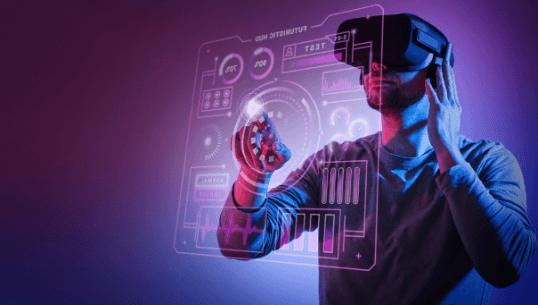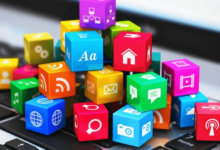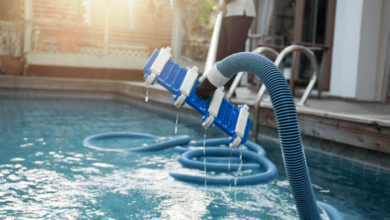How is augmented reality (AR) changing the retail and marketing landscape?

Introduction
The rapid advancement of technology continues to reshape various industries, and augmented reality (AR) stands out as a transformative force in retail and marketing. This innovative technology merges the physical and digital worlds, offering immersive experiences that captivate consumers and create new opportunities for businesses. In this comprehensive article, we’ll explore how AR is revolutionizing retail and marketing, its benefits, and the future prospects of this exciting technology.
Understanding Augmented Reality (AR)
Augmented reality is a technology that overlays digital content, such as images, videos, and information, onto the real world through devices like smartphones, tablets, and AR glasses. Unlike virtual reality (VR), which creates entirely digital environments, AR enhances the real-world environment with interactive elements.
The Evolution of AR in Retail and Marketing
AR has come a long way from being a futuristic concept to becoming a mainstream tool in retail and marketing. Early applications were limited and often gimmicky, but advances in hardware and software have made AR more accessible and effective. Today, AR is used to enhance product visualization, provide interactive customer experiences, and create personalized marketing campaigns.
Enhancing Customer Experiences with AR
One of the primary ways AR is changing the retail landscape is by enhancing customer experiences. By allowing customers to visualize products in their own environment before making a purchase, AR reduces uncertainty and increases confidence. For example, furniture retailers like IKEA use AR apps to let customers see how furniture will look in their homes. This immersive experience helps customers make more informed decisions and reduces the likelihood of returns.
Interactive Product Visualization
AR enables customers to interact with products in ways that were previously impossible. Through AR apps, customers can see 3D models of products, rotate them, zoom in for details, and even try them on virtually. This interactive product visualization is particularly beneficial in the fashion and beauty industries, where customers can see how clothing, accessories, or makeup will look on them before buying.
Personalized Shopping Experiences
Personalization is a key trend in modern retail, and AR takes it to the next level. By analyzing customer data and preferences, AR applications can offer personalized recommendations and tailor the shopping experience to individual needs. For example, AR mirrors in clothing stores can suggest outfits based on a customer’s previous purchases and style preferences, creating a more engaging and satisfying shopping experience.
Boosting Engagement through AR Marketing
AR is also transforming marketing by creating more engaging and interactive campaigns. Traditional marketing methods often struggle to capture and hold consumers’ attention, but AR offers a novel way to engage audiences. From AR-enabled packaging to interactive advertisements, brands are finding creative ways to leverage this technology.
AR-Enabled Packaging
AR can turn ordinary product packaging into an interactive experience. By scanning a product’s packaging with their smartphone, customers can access additional content such as tutorials, recipes, or behind-the-scenes videos. This not only adds value to the product but also strengthens the emotional connection between the brand and the consumer.
Interactive Advertisements
AR ads go beyond static images or videos by allowing users to engage with the content. For instance, a car manufacturer might create an AR ad that lets users see a 3D model of a car, explore its features, and even customize its color and accessories. This level of interactivity makes the advertisement more memorable and increases the likelihood of conversion.
AR in Social Media Marketing
Social media platforms are increasingly incorporating AR features, enabling brands to reach consumers in creative ways. AR filters and lenses on platforms like Instagram and Snapchat allow users to interact with branded content and share their experiences with their followers. This user-generated content not only promotes the brand but also adds a layer of authenticity and trust.
Driving Sales and Reducing Returns with AR
One of the significant benefits of AR in retail is its potential to drive sales and reduce returns. By providing a more accurate representation of products and allowing customers to try before they buy, AR helps in making informed purchasing decisions. This leads to higher customer satisfaction and fewer returns, ultimately benefiting both consumers and retailers.
Increasing Online Sales
For e-commerce businesses, AR can bridge the gap between online and in-store shopping experiences. AR apps allow customers to virtually try on clothes, see how furniture fits in their space, or visualize how a new paint color will look on their walls. This reduces the uncertainty associated with online shopping and encourages more confident purchases.
Reducing Product Returns
Returns are a significant challenge for retailers, especially in the fashion industry. AR can help mitigate this issue by providing customers with a more accurate understanding of how a product will fit or look in their environment. When customers are more satisfied with their purchases, the likelihood of returns decreases, saving retailers time and money.
Implementing AR in Physical Stores
AR is not limited to online experiences; it is also transforming physical retail spaces. Retailers are integrating AR into their stores to create interactive and engaging environments that attract and retain customers.
AR-Enhanced Store Navigation
Large retail stores can be overwhelming, and finding specific products can be challenging. AR can enhance store navigation by guiding customers to the products they are looking for. By using their smartphones or AR glasses, customers can receive directions and information about products as they move through the store, making their shopping experience more efficient and enjoyable.






